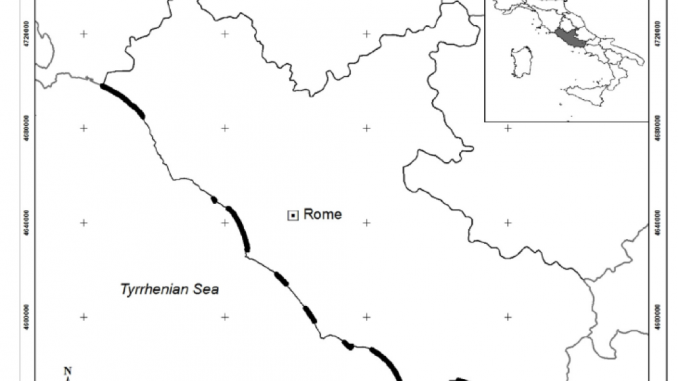
Abstract
We examined the relationship between coastal habitats (sensu European Union Habitats Directive) and local dune morphology along a Mediterranean coastal dune system by integrating field collected vege- tation data and remotely sensed imagery. Specifically, we described the morphological profile of each EC habitat based on the morphological variables that are most likely to affect their occurrence, including elevation, slope, curvature, northness, eastness and sea distance. In addition, we assessed the role and strength of each morphological variable in determining the occurrence of EC habitats.
We used 394 random vegetation plots representative of six EC habitats (Habitat 1210: “Annual vege- tation of drift lines”; Habitat 2110: “Embryonic shifting dunes”; Habitat 2120: “Shifting dunes along the shoreline with Ammophila arenaria”; Habitat 2210 and 2230: “Crucianellion maritimae fixed beach dunes” and “Malcolmietalia dune grasslands”; Habitat 2250: “Coastal dunes with Juniperus spp.”; Habitat 2260: “Cisto-Lavanduletalia dune sclerophyllous scrubs”) found along the Tyrrhenian coast of central Italy. We derived each morphological variable from a DTM (Digital Terrain Model) obtained from 2-m resolution LiDAR (Light Detection And Range) images. The mean value of each variable was calculated at different spatial scales using buffer areas of increasing radius (2 m, 4 m, 8 m) around each vegetation plot. Mean morphological values for each EC habitat were compared using Kruskal-Wallis rank test. The role and strength of the relationship between habitat type and the morphological variables were assessed using Generalized Linear Models.
EC habitats occur differentially across dune morphology, and the role and strength of each morpho- logical variable define habitat specificity. Dune elevation and sea distance were determined to be the key factors in shaping EC habitat occurrence along this section of the Mediterranean coast. Identifica- tion of the close relationship between habitat type and morphological variables deriving from airborne LiDAR imagery points to the high potential of such remote sensing tool for analyzing and monitoring the integrity of coastal dune ecosystems. As airborne LiDAR enables the rapid collection of extremely accurate topographic data over large areas, it also offers useful information for the management of these threatened and fragile ecosystems.

Be the first to comment